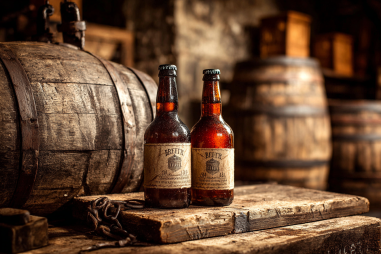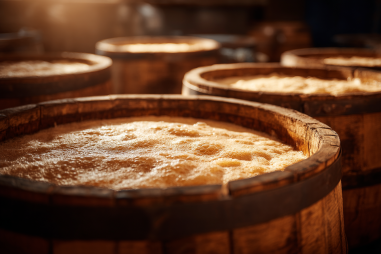Cream Ale stands out among American beer styles for its smooth, refreshing character and expertly balanced flavor profile. Though the name might suggest a rich or heavy brew, Cream Ale is surprisingly light in body, making it an approachable choice for novice and seasoned beer drinkers alike. This style, which dates back to the 19th century, combines ale yeast with lager-style cold fermentation techniques to create a distinct palate experience that is both crisp and subtly nuanced. Let’s explore what really makes the Cream Ale flavor profile unique and why it remains a favorite in beer communities.
Malt Characteristics: Sweetness and Body
The backbone of any Cream Ale lies in its malt composition, which offers a gentle sweetness combined with a soft, approachable body. Typically brewed with pale malt, sometimes accompanied by a small addition of adjunct grains like corn or rice, this style achieves a light to medium-light malt presence that doesn’t overwhelm the palate.
The sweetness in Cream Ale is clean and subtly grainy, often reminiscent of freshly baked bread or biscuit notes. This malt-driven sweetness balances the bitterness from the hops, contributing to the drinkability and smooth mouthfeel. The body of the beer is generally light to medium-light, lending a silky texture without any heaviness, which supports the style’s crisp finish and encourages easy sipping.
Hops Influence and Bitterness Level
Hops in Cream Ale play a complementary role rather than dominating the flavor profile. Because this beer style is designed to be mild and refreshing, hop bitterness is kept low to moderate, usually falling in the range of 8 to 20 International Bitterness Units (IBUs). This ensures a clean bitterness that cuts through the malt sweetness without overpowering it.
The hop varieties used in Cream Ale are often American hybrids or noble-type hops, lending delicate floral, herbal, or slightly fruity notes. These subtle hop aromas and flavors help to brighten the beer, enhancing drinkability and providing a crisp finish. The balanced hop bitterness also acts as a palate cleanser, making Cream Ale a versatile beer for many occasions.
Yeast Strains and Their Impact on Flavor
Cream Ale is unique in that it is brewed with ale yeast but often fermented at cooler temperatures like a lager, creating a hybrid of traditional ale and lager techniques. The choice of yeast strain and fermentation method contributes significantly to the flavor profile.
The ale yeast used in Cream Ale tends to be clean and neutral, minimizing esters and phenols that can produce fruity or spicy notes common in other ales. This results in a crisp, pure malt character with very little yeast-derived complexity, allowing the delicate malt and hop nuances to shine.
In some recipes, brewers may also incorporate a short cold-conditioning period similar to lagering, which further smooths out the beer, reducing harsh edges and imparting an extra clean finish that sets Cream Ale apart from other ales.
Aroma Profile and Carbonation Effects
The aroma of Cream Ale harmonizes with its flavor profile, presenting a subtle malt sweetness coupled with light hop characteristics. Expect gentle notes of toasted bread, mild honey sweetness, and hints of floral or herbal hops, all rounded out by the clean yeast presence.
Carbonation plays a crucial role in the sensory experience of Cream Ale. Typically, this style boasts moderate carbonation levels, which contribute to a lively mouthfeel and enhance the beer’s refreshing qualities. The bubbles lift the aromas toward the nose, amplify the perceived crispness, and help cleanse the palate after each sip.
This fizz also accentuates the beer’s light body, making Cream Ale feel bubbly and bright rather than heavy or dense — a key factor in why it is so approachable and popular especially in warmer weather.
Pairing Cream Ale with Food
Thanks to its balanced yet subtle flavor profile, Cream Ale pairs well with a wide variety of foods. Its mild malt sweetness and moderate hoppiness make it incredibly versatile at the dining table:
- Grilled chicken or turkey: The light body and clean finish complement the delicate flavors of poultry without overpowering them.
- Seafood dishes: Whether fried fish or steamed shellfish, the crisp carbonation and slight sweetness balance well with the natural brininess.
- Light salads and vegetables: Cream Ale’s fresh, clean profile enhances the crispness of greens and mild dressings.
- Cheeses: Mild cheeses such as mozzarella, Havarti, or mild cheddar harmonize with the beer’s creamy mouthfeel.
- Spicy foods: Dishes like spicy tacos or Thai cuisine benefit from the beer’s cooling carbonation and restrained bitterness, which helps moderate heat.
Overall, Cream Ale offers a true “beer for any meal” versatility that makes it a great choice for those who want a beer that can both shine on its own and enhance dining experiences.
What to Expect When Tasting Cream Ale
When you crack open a Cream Ale and take your first sip, prepare for a beer that’s smooth and inviting. The initial taste showcases a gentle malt sweetness—often described as bready or biscuity—that provides comforting familiarity.
As the beer glides over the palate, you’ll notice a crisp, clean finish supported by mild hop bitterness and moderate carbonation. This combination leaves your mouth refreshed and ready for the next sip, making Cream Ale an excellent session beer.
The flavor simplicity is deceptive because despite its subtlety, this style delivers balance and harmony, making each aspect—from malt to hops to yeast—work seamlessly together. Whether you’re a casual drinker or a craft beer aficionado, a Cream Ale offers a unique, approachable drinking experience that’s both classic and satisfying.







